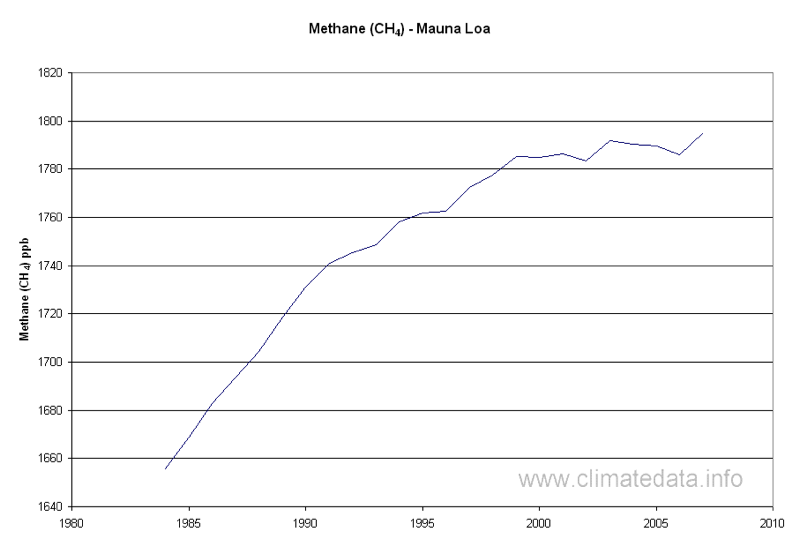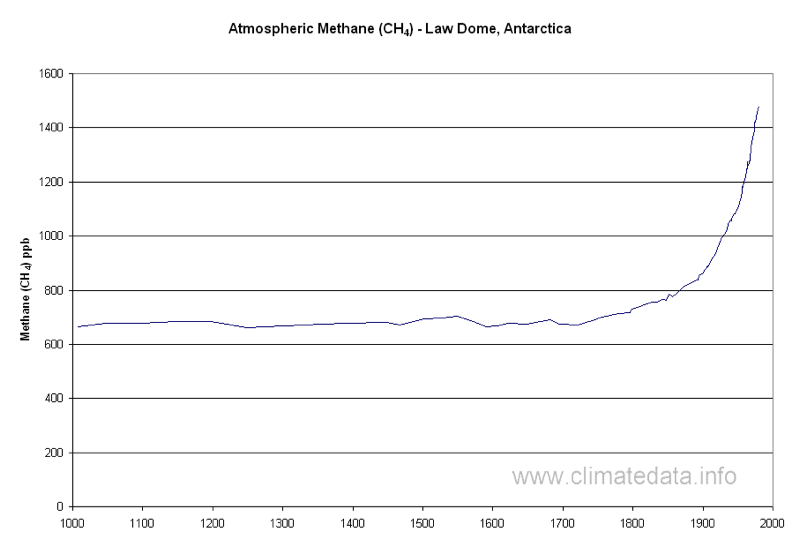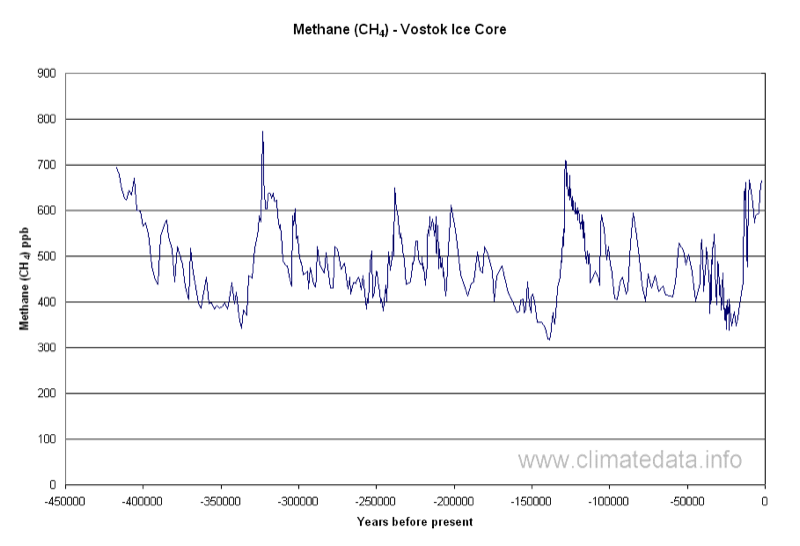METHANE
Methane (CH4) is present in the atmosphere in smaller amounts than CO2 but proportionally has more of a greenhouse effect. About 60% of the methane is human related, and comes from fossil fuel production, livestock, rice cultivation, biomass burning and waste management. Natural sources include the decay of vegetation in wetlands (80%), termites digestive processes (10%) and lesser amounts from oceans, hydrates, geologic sources, wildfires and wild animals.
Figure 1 shows the level of Methane recorded at the Mauna Loa observatory, Hawaii.
Data for the last millennium from the Law Dome ice core in Antarctica, shown in Figure 2, reveals that there has been a marked increase in Methane over the last few centuries.
Figure 3 shows longer term data from the Vosotok ice core, also in Antarctica, indicating that levels of Methane during past ice ages and warm periods have varied but are lower than at present.
Figure 1 shows the level of Methane recorded at the Mauna Loa observatory, Hawaii.
Data for the last millennium from the Law Dome ice core in Antarctica, shown in Figure 2, reveals that there has been a marked increase in Methane over the last few centuries.
Figure 3 shows longer term data from the Vosotok ice core, also in Antarctica, indicating that levels of Methane during past ice ages and warm periods have varied but are lower than at present.
http://www.climatedata.info/


